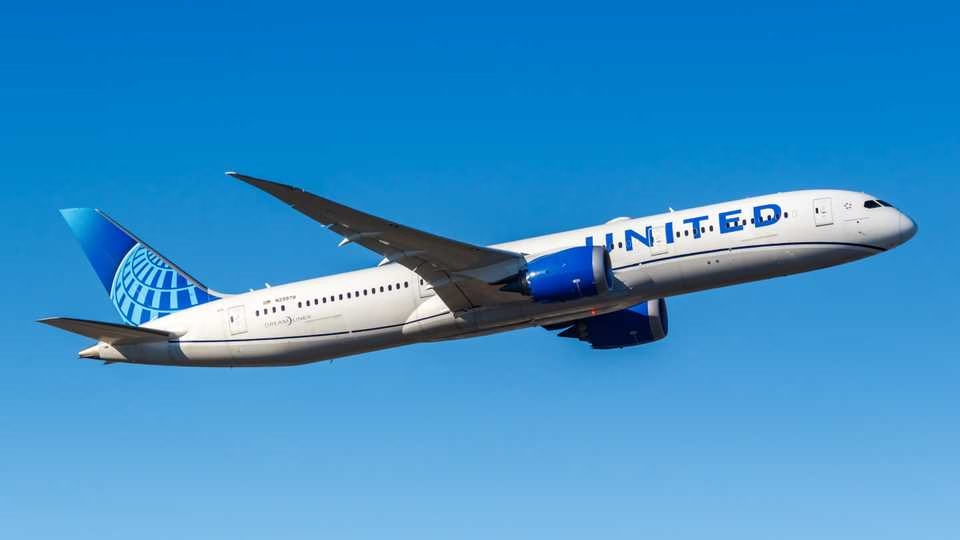United Airlines Extends Swap Of 767 For Boeing 787 Dreamliner On Dulles-Barcelona Route
Washington D.C. — April 19, 2025
United Airlines has announced an extension of its decision to replace the aging Boeing 767 with the state-of-the-art Boeing 787 Dreamliner on its transatlantic route from Washington Dulles International Airport to Barcelona-El Prat Airport. The move, initially planned as a seasonal swap, has now been extended indefinitely following an overwhelmingly positive response from passengers, improved operational efficiency, and strategic alignment with the airline’s long-term fleet modernization goals.
A Change That Took Off
Originally introduced as a summer trial in June 2024, the switch to the Dreamliner was met with immediate enthusiasm from both frequent flyers and first-time international travelers. United’s 787-9, which now serves the route daily, offers significant upgrades in comfort, fuel efficiency, and overall passenger experience compared to the older 767-300ER it replaced.
“Customer feedback was phenomenal,” said Elise Crawford, Vice President of Transatlantic Operations at United Airlines. “The Dreamliner has transformed this route. From quieter cabins and better air quality to enhanced in-flight entertainment and our Polaris business class suites, it’s clear passengers want more Dreamliner and less 767.”
The Dulles-Barcelona route, which connects the U.S. capital with one of Europe’s most dynamic cultural and economic hubs, has been a growing part of United’s transatlantic portfolio. Passenger traffic between the two cities increased by 19% year-over-year since the Dreamliner was introduced, according to internal airline data.
Why The Dreamliner Makes Sense
The Boeing 787 Dreamliner is among the most advanced long-haul aircraft flying today. Made with composite materials and equipped with next-generation engines, the aircraft offers 20% greater fuel efficiency compared to the 767, lower carbon emissions, and a significantly quieter ride.
From a business perspective, the aircraft swap is part of United’s broader “NextGen Fleet” strategy, which aims to phase out older widebodies in favor of newer, greener, and more customer-friendly aircraft.
“We’re not just modernizing the fleet—we’re optimizing the customer journey,” said CEO Scott Kirby during a recent aviation summit in Chicago. “Replacing the 767 on one of our most promising leisure and business routes with the 787 was a no-brainer, especially as we double down on sustainability and customer satisfaction.”
The 787 also offers more cargo capacity, which has enabled United to increase revenue through freight transport between the U.S. and Spain, a less-publicized but increasingly vital component of transatlantic aviation economics.
Travelers Notice The Difference
For passengers, the most noticeable change has been comfort. The 787’s improved cabin pressure and humidity levels reduce jet lag, while its larger windows and higher ceilings create a sense of space uncommon in most long-haul aircraft.
“This is my third time flying to Spain, but the first time on the Dreamliner. I couldn’t believe the difference,” said Maria Hensley, a retiree from Bethesda, Maryland, who flew to Barcelona with her husband last month. “I actually felt human when we landed.”
United’s Polaris business class on the 787 features lie-flat seats, aisle access for every passenger, Saks Fifth Avenue bedding, and gourmet cuisine. Meanwhile, economy travelers benefit from larger overhead bins, more legroom in Economy Plus, and an upgraded entertainment system.
The improved experience has helped United stand out in a fiercely competitive transatlantic market, where carriers like Delta, American Airlines, and Iberia also operate flights to Barcelona. Travel analysts believe the Dreamliner’s allure could become a decisive factor in booking decisions.
“Aircraft type matters more than people realize,” said Kara Whitman, an aviation industry consultant at SkyBridge Analytics. “When travelers compare options and see a Dreamliner versus a 767 or even an A330, the newer aircraft often tips the scale.”
An Economic Boost On Both Ends
The decision to make the Dreamliner a permanent fixture on the route also has local economic implications. At Washington Dulles, increased Dreamliner operations mean more maintenance work, refueling contracts, and ground crew engagement. United has already expanded its maintenance partnership with local firm NovaJet Services to accommodate the newer aircraft.
In Barcelona, the higher capacity of the 787 and greater cargo hold availability are seen as a boon for tourism and trade. According to a spokesperson from Turisme de Barcelona, visitor arrivals from the Washington area have surged since the Dreamliner debut, contributing to local hospitality and retail growth.
Looking Ahead
As United expands its Dreamliner footprint across the Atlantic, speculation grows about which other routes might benefit from similar upgrades. Insiders suggest that the Newark-Lisbon and Chicago-Rome routes are under review for possible 787 deployment in 2026, though the airline has not confirmed any changes.
Fleet strategy is only one part of United’s larger international vision. The airline is also negotiating additional slots at Barcelona-El Prat and is exploring the possibility of adding secondary Spanish cities like Valencia and Bilbao to its route map in the coming years.
“The Dreamliner has become more than just a tool—it’s a symbol of our global ambitions,” Crawford said. “It connects continents with a sense of purpose, precision, and pride.”
The Bottom Line
With this move, United Airlines is making a clear statement: comfort, efficiency, and innovation are not optional luxuries—they are the future of air travel. By cementing the Dreamliner on the Dulles-Barcelona route, United not only enhances its brand reputation but also sets a new standard for what travelers can expect when crossing the Atlantic.
For those looking to soak up Gaudí’s architecture or seal a business deal along Barcelona’s bustling Diagonal Avenue, the journey just got a whole lot smoother—and a lot more stylish.
